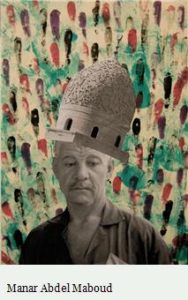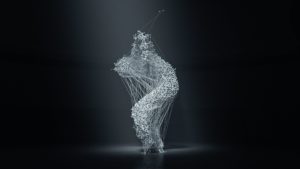Just as arts is the secretion of any given society’s culture, the culture of this society—conversely—is the mirror and outcome of these arts.
The Role of the Arts in Promoting Society
Just as the arts are an expression of any society’s culture, the culture of this society – conversely – is the mirror and outcome of these arts. The interchangeable relationship between the arts – as a cultural value offered to the public – and the general population that interacts with and embodies these values must perpetually rise upwards and never deviate – even marginally – downwards, not only with respect to heightening the esteem and taste for aesthetic beauty, but also on other levels such as revering the value of morality, virtue, hard work, science, defense of the motherland, as well as all the other values representing the backbone of the success and development of any contemporary civilized society.
Accordingly, the role of artists in all categories: plastic arts, music and singing, drama, and poetry must rise to become an influentially positive element that pushes and supports this interchangeable relationship upwards and never downwards, particularly since the majority of artists constitute the cream of society and are revered and admired by the public. In fact, ordinary people’s infatuation with artists in general puts a greater responsibility on their shoulders to serve as role models guiding societies towards cultural edification and enhancement.
the Impact of the Evolution of Digital Technology on the Arts:
Contemporary art has been greatly influenced by the rapid development in digital technology and by the astonishing progression in the introduction of new, more attractive and tougher materials that artists can work with. Both these innovations have expanded horizons of creativity and opened new artistic frontiers. They have also allowed contemporary artists to reduce time spent in the actual execution of artwork to a minimum thereby freeing them to focus more on contemplation, creativity and developing groundbreaking ideas, as well as sound preparation for artwork.

The Negative Risks of the Influence of Technology on Artists:
The broad array of options now available to artists through new technologies may sometimes have a dangerously negative effect precisely because they offer the artists means of expression they never imagined were possible. Faced with myriad options, the artist may be overwhelmed, confused and puzzled and these emotions are immediately reflected in his works. His art work may become increasingly repetitive and devoid of imagination or spirit. Hence, the flame of creativity dies out and the tide of inspirational revelation recedes and the building blocks of imagination freeze at the bottom of the artist’s psyche, as they gradually transform into a shallow abstract translation of a constellation of enormous technological capabilities, devoid of any creative substance.
The Human Touch:
Digital technology and modern techniques have had the strongest impact on the art of painting and drawing. In the past, painting and drawing depended on the artist’s skills in wielding his traditional tools – the brush, the pencil, charcoal or pastels. The artist, through conventional and calculated steps, was in control of the density of color, the degrees of the different shades, the realism or abstraction of his work of art. Artists today, on the other hand, operate with clicks of the mouse, video tools and digital colors, which even if ostensibly mimic old traditional tools with respect to performance, are still radically different with regard to usage and wielding techniques and to the means to achieve the desired artistic effect from them. There is no doubt that the human touch in the classical school of painting had a major influence on the shape of the painting and the effect of the tools, particularly when an artist used his or her human fingers to place the special effects and touches on his or her work. Today’s modern technology has, however, reduced the need for the human artistic touch in favor of a vast array of diverse and different tools, each of which is a mechanism that gives access to an even bigger set of tweaking and tuning options that open up limitless horizons for artists to express themselves more creatively and accurately, to the degree. This stet of limitless options available to the artist has reached such a degree that computer-oriented artists sometimes inadvertently produce magnificent masterpieces by mere chance. Consequently, artwork upon completion may emerge drastically different from the artist’s original conception of the painting.

The New Challenge:
Possessing this massive quantity of tools and capabilities must be accompanied by a comprehensive and in-depth knowledge of every detail of these tools and their capabilities, so as to enable the artist to successfully translate all his or her fantasies and creativity via the designated tool, using the fastest and shortest means possible.
In other words, artists today are presented with a gateway to creativity that is sophisticated and complex, replete with an enormous variety of techniques, and therefore artists need to hone their skills and understand these techniques well in order to maximize the capabilities they offer. Despite the challenge, the artist must once again become master of these enormous tools and techniques so that they become the execution tools by which he translates his vision and creativity and so that the final outcome truly reflects his personality.
In conclusion, there is no question that contemporary artists are facing increasingly more complex and complicated challenges to presenting distinctive artwork in the face of the many recent technological advances that have expanded and diversified the art world. Clearly, artists today find it more challenging than ever to present original and innovative ideas, and they need to exert themselves and stretch their imagination to succeed. Moreover, the increase in the state of tension that generally surrounds us has become today the strongest force, has among the strongest impact, and is a primary motivator for artists to push themselves and encourages them to continue their creative endeavors without stopping.

Leave a Reply